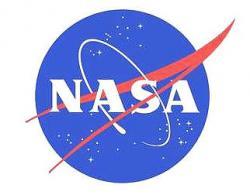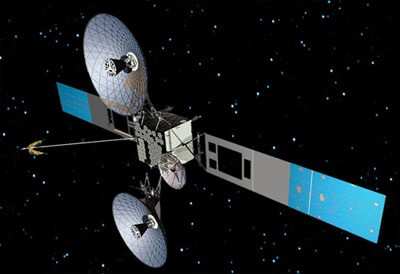Thu, Apr 30, 2009
Tracking and Data Relay Satellite System (TDRS) K-L Readies For
2012-13 Launches
 Boeing has completed a Preliminary
Design Review (PDR) for its Tracking and Data Relay Satellite
system (TDRS) K-L program, an important design milestone as the
program moves toward integration of the TDRS K satellite for NASA.
The comprehensive five-day review was held in El Segundo in March
and attended by NASA project, program and Headquarters officials
(now tell me, does that sound like a wild and crazy bunch... or
what?--Ed.).
Boeing has completed a Preliminary
Design Review (PDR) for its Tracking and Data Relay Satellite
system (TDRS) K-L program, an important design milestone as the
program moves toward integration of the TDRS K satellite for NASA.
The comprehensive five-day review was held in El Segundo in March
and attended by NASA project, program and Headquarters officials
(now tell me, does that sound like a wild and crazy bunch... or
what?--Ed.).
NASA selected Boeing in December of 2007 to built the next
generation of TDRS (Tracking & Data Relay Satellite) data relay
satellites. The TDRS-K satellite is expected to launch in 2012,
with the TDRS-L following a year later.
The PDR, which followed the successful delta integrated baseline
review completed earlier this year, is the result of a series of
monthly reviews and ongoing partnership between Boeing and NASA to
execute to plan. It included presentations on systems engineering,
program management, safety and mission assurance, the spacecraft,
the launch vehicle, the ground segment and mission operations.
"Our customer was very pleased with the results of the PDR and
recognized Boeing's commitment to the success of the TDRS program,"
said Craig Cooning, vice president and general manager of Boeing
Space and Intelligence Systems. "Boeing now proceeds into
implementation of the detailed design for TDRS K with NASA's full
confidence that our team is on good footing and properly baselined
to meet the technical requirements and schedule."
Boeing is on track to complete the program's Critical Design
Review in early 2010, after which spacecraft integration can
begin.

Under the contract awarded in December 2007, Boeing is
developing the next-generation K-L series of TDRS satellites to
provide NASA with communications capability between ground-based
control and data-processing facilities and Earth-orbiting
spacecraft, including the space shuttle, the Hubble Space
Telescope, the International Space Station and dozens of unmanned
scientific satellites in low Earth orbit.
More News
He Attempted To Restart The Engine Three Times. On The Third Restart Attempt, He Noticed That Flames Were Coming Out From The Right Wing Near The Fuel Cap Analysis: The pilot repor>[...]
Make Sure You NEVER Miss A New Story From Aero-News Network Do you ever feel like you never see posts from a certain person or page on Facebook or Instagram? Here’s how you c>[...]
From 2009 (YouTube Edition): Leading Air Show Performers Give Their Best Advice for Newcomers On December 6th through December 9th, the Paris Las Vegas Hotel hosted over 1,500 air >[...]
Aero Linx: NASA ASRS ASRS captures confidential reports, analyzes the resulting aviation safety data, and disseminates vital information to the aviation community. The ASRS is an i>[...]
“For our inaugural Pylon Racing Seminar in Roswell, we were thrilled to certify 60 pilots across our six closed-course pylon race classes. Not only did this year’s PRS >[...]
 NTSB Final Report: Rutan Long-EZ
NTSB Final Report: Rutan Long-EZ ANN FAQ: Turn On Post Notifications
ANN FAQ: Turn On Post Notifications Classic Aero-TV: ICAS Perspectives - Advice for New Air Show Performers
Classic Aero-TV: ICAS Perspectives - Advice for New Air Show Performers ANN's Daily Aero-Linx (06.28.25)
ANN's Daily Aero-Linx (06.28.25) Aero-News: Quote of the Day (06.28.25)
Aero-News: Quote of the Day (06.28.25)




